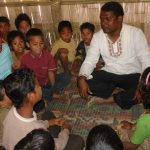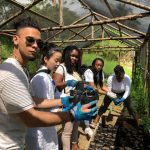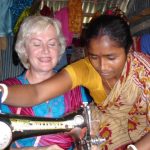1 Introduction to Community Development Practice
Dr. Mahbub Hasan MSW, Ph.D.
Topics:
- Introduction-Context for Writing this Resource Book
- Community Development as a Social Work Practice
- What or Who is Community?
- How should we understand ‘Community Development’?
- Community Resilience
- Sustainable Development
- Why SDGs important for Community Practitioners
- Community development practice: At a Glace
Introduction
Community development practice is an important area of social work. This discipline equips community members and leaders to work together to care for their community in good and challenging times. The role of a Community Development Worker is to facilitate a process where people come together for mutual interests and benefits. The word community comes from the ancient Greek word for fellowship (Brown & Hannis, 2012, p.1). People belong to various communities due to location, age, gender, ethnicity, shared experience, and interest. Over 2300 years ago, the Greek philosopher Aristotle described people coming together for different reasons. Recent writers have identified that those reasons include “enjoying mutual association, fulfilling basic needs, and finding meaning in life” (Brown & Hannis, 2012, p.1).
1. History and Context for Writing this Resource Book
After World War II, many countries became independent from colonial powers such as England and France. International agencies such as UNDP, World Food Program, UNHCR, and hundreds of international NGOs such as Save the Children, Oxfam, ActionAid International founded this time to support communities to fight poverty, inequality, and climate change, and to promote education and the rights of women and children. There is debate about these agencies’ functional approach and ultimate mission; however, until today, international organizations are working with national governments, local agencies, and communities through partnership.
Meanwhile, in developed countries like Canada, community-based organizations, charities, and government institutions work with local communities for their well-being and quality of living. They have adapted the community development approach because “communities make important contributions to individual and family well-being” (Brown & Hannis, 2012, p.1). Therefore, Community Development Practice: From Canadian and Global Perspectives is an Open Education resource (OER) for students, learners, and community leaders. This book will define and explain the concepts used in community development, as well as discuss community development principles, theories and frameworks. This book will share tools and processes for community asset mapping, needs assessment, community engagement, planning, and grant writing. In addition, we will share international community development stories and practices from Asia, Africa, and Australia.
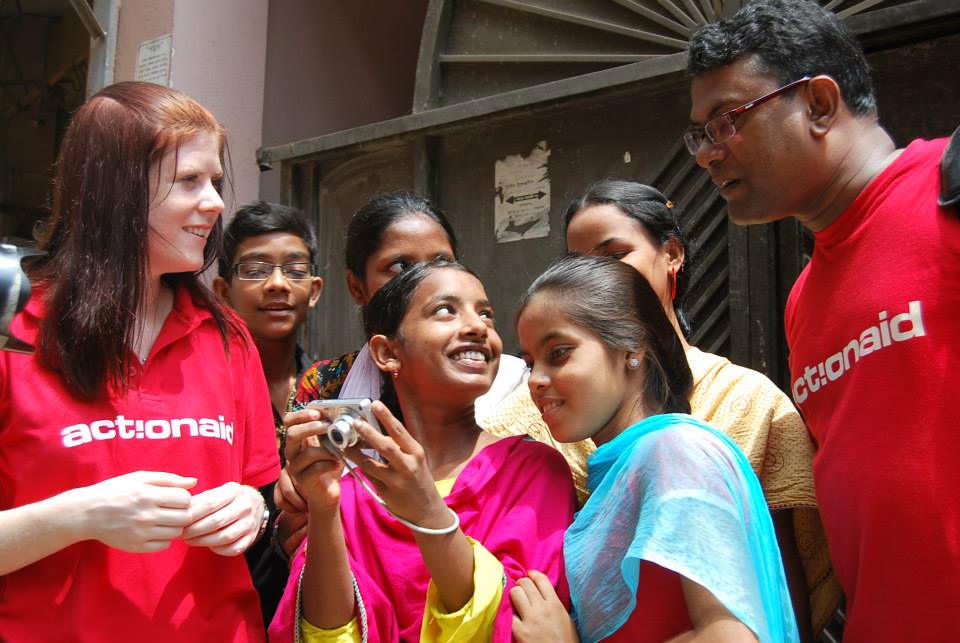
The world is full of possibilities. Whether in the global south or north, I have worked with diverse countries across the globe and seen how passionately people are coming together and working collaboratively for their well-being. I started my community development practice with an urban slum dwellers community in 1998 through ActionAid International. This project organized 2200 women through microfinance and adult literacy programs. When I started my work, there were widespread stereotypes about these slum dwellers being the cause of violence, crime, and creating an unhealthy environment. However, while working with these marginalized people, I saw their resiliency, collaboration, hard work, and leadership for their community welfare. I saw their strengths. Women not only became entrepreneurs and made decisions for their family affairs, but demonstrated leadership by challenging agency policies through dialogue and resistance. Through my work at ActionAid International and Canadian International Development Agencies during 1998-2010, I worked with various communities in Bangladesh, India, Sri Lanka, Nepal, and Vietnam and witnessed the power of communities in challenging oppression, fighting for climate change, human rights and social justice. While working in Toronto since 2011, I was amazed to see the diversity of communities living here. I am inspired to see people from countries all over the world living in harmony and cohesion. Living in Regent Park in downtown Toronto, I have witnessed residents sharing their talents and collectively working together for the well-being of their community. Across neighborhoods all over the world. people are coming together to revitalize their neighborhood and make it greener, safer, and more accessible. People are coming together in community to fight against racism, Islamophobia, and anti-Semitism and collectively striving for a safer community, city, and country in Canada. This resource book will share stories of community development practitioners and community leaders and connect you with some models of community development practice and principles in Canada and across the world.
Video: Meet Waleid, A Community Leader. Learn community development process and principles
Created by: Mahbub Hasan, Year: 2022. Source: YouTube, https://youtu.be/k_uoNJJXe7E
2. Community Development as a Social Work Practice
Social Work is a practice-based profession and an academic discipline that “promotes social change and development, social cohesion, and the empowerment and liberation of people” (International Federation of Social work-IFSW). The IFSW states that “principles of social justice, human rights, collective responsibility and respect for diversities are central to social work.” This definition of IFSW refers to the role social workers play beyond supporting individuals and families. Social workers engage in community-based practice and work towards changing collective social, economic, and political conditions for communities (Ives et al., 2020, p.141).
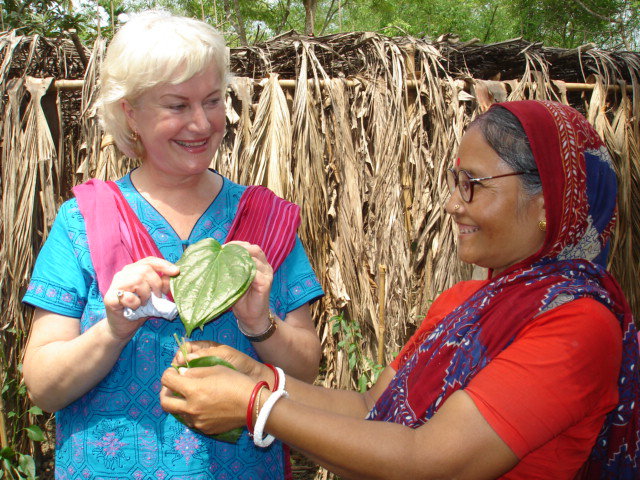
2.1 Why Social Workers engage in Community Practice/Community Trends:
Communities across the world today are facing challenges due to socio-economic and environmental issues. There are growing inequalities, as the rich get richer and marginalized communities are becoming more vulnerable. The farmers are not getting a fair price for their products, and frontline workers and daily laborers are involved in precarious jobs and earning minimum wage. Immigrants, newcomers, and racialized community members face systemic barriers in securing good and relevant jobs. Indigenous and remote communities experience clean water advisories and do not have access to safe water, shelter, and healthcare. Low-income families struggle with current inflation, and it has become difficult for them to pay their bills or buy food for their families. COVID-19 makes life more challenging, whether it is youth who face challenges with mental health due to prolonged isolation and online learning, or women who are the victim of family violence. . The regional conflicts make women and children very vulnerable, and their human rights are violated by the aggressors. In developing countries, quality education is a challenge due to the socio-economic condition of the country. Children face racism and discrimination at school in large cities. There is a rise in gun violence in major cities in North America, and often racialized youth are the victim of this violence. There is a housing crisis in Toronto, where affordable housing is decreasing while, neighborhoods are gentrifying in the name of revitalization. Most importantly, our mother earth is facing a climate crisis. More and more communities are experiencing excessive rainfalls, floods, cyclones, tornados, drought, heat waves, and wildfire.

In the context of all of these challenges, community development as a practice provides hope for a way out. We need to work collectively to face these socio-economic, environmental, cultural, and systemic barriers. We require to work with our communities to address these issues through a community development approach. Community Development Workers are critical to tackle these challenges, with the understanding, capacities, and tools to achieve the socio-economic well-being of their communities.
3. What do we mean by ‘Community’?
There are a variety of definitions for Community. According to Ives et al. (2020), “Community can be defined by geography, identity, interest, or any integration of the three (p.141). Ives further stated that communities could be physically constructed as members of neighbourhood, municipality, or other geographic region and collection of people connected through shared identities, interests, and experiences (e.g., ethnicity, religion, ideology, gender, sexual orientation, educational or professional background, common experiences of particular events). The definition of Community further expanded and Ives et al. (2020) opine that the recent conceptualizations of Community include those that build Community in virtual settings or “e-communities” such as for online learning or support.
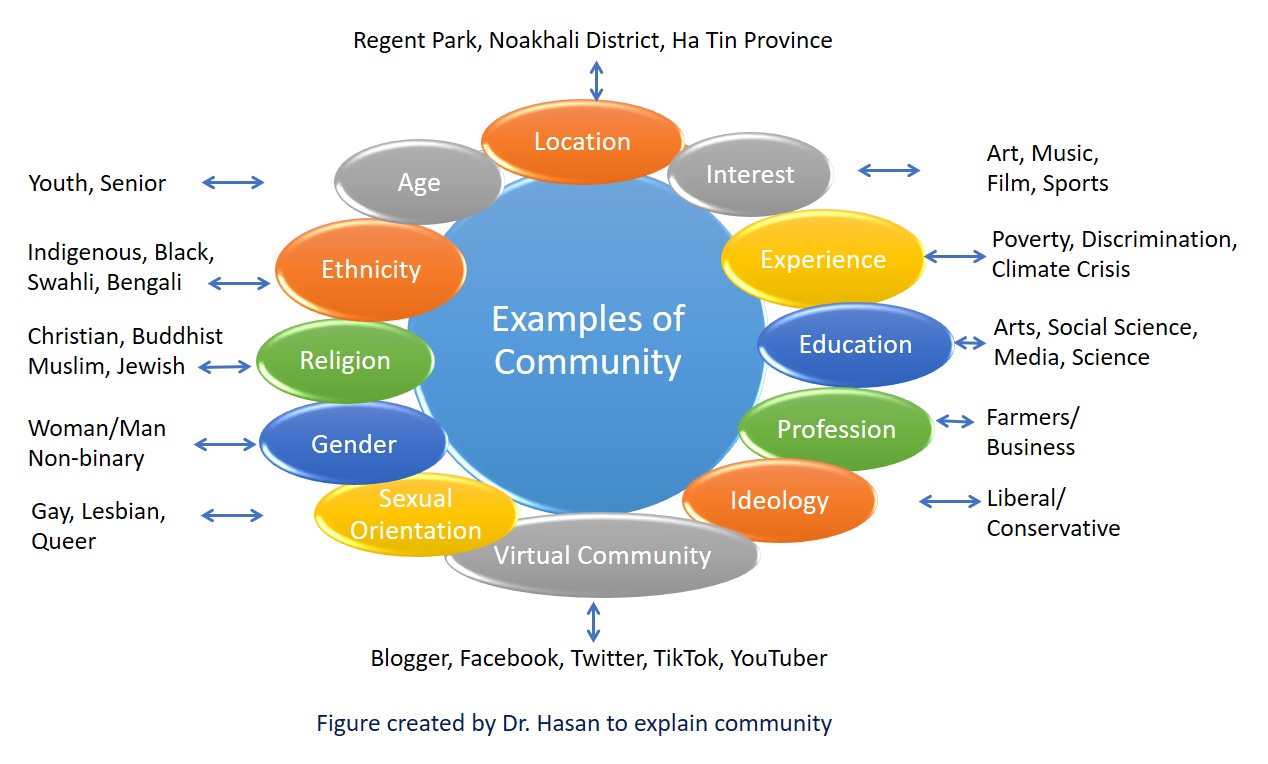
The diagram shows some examples of communities based on various characteristics. Let me define my community using some characteristics. Geographically I live in the Regent Park Neighbourhood of Toronto. Ethnicity wise I am a Bengali; by profession, I am an Educator and Community Development Practitioner. I have a great interest in sports. I am experiencing uneven weather-sometimes extreme cold and sometimes heat due to climate change. Considering interests and characteristics, I am engaged with various community initiatives, agencies, and professional groups and work together for my communities’ welfare. I join in meetings and planning sessions, participate in organizing events, and advocate for my community’s socio-economic development. As a community member, I work both as a facilitator and participant.

3.1 Types of Community
There can be four types of communities, as defined by Brown & Hannis (2012):
- A geographic community is a group of people living in the same physical area
- A group of people “who share or possess a common and essential factor such as gender, race, religion, or socioeconomic status” (Brown & Hannis, 2012, p.5)
- A group of people “who come together to address a common interest or concern”. This category would include professional associations, trade unions, and social action groups, for example (Brown & Hannis, 2012, p.5).
- A virtual community that comes together to learn about work and “share their passion and hobbies” (Brown & Hannis, 2012, p.5).
3.2 Functions of Communities:
According to Warren (1987), there are five functions of a community. I am going to quote these five functions from Brown and Hannis (2012)
“The production, distribution, and consumptions function of community ensures some measures od meeting supply and demand for certain basic necessities, such as food, shelter, and clothing, by locally owned and run business or by local governance. A socialization function is met through the process of transmitting to members prevailing knowledge, social values, and behavior patterns. A social control function is met by communities that ensure conformity to group norms. The social participation function of communities is met by providing opportunities for members to interact with each other and to participate in co-operative activities. A mutual support function means that the community acts as a bridge between families and bureaucratized services by providing informal opportunities for mutual support, including care for sick, child care, and help in times of crisis” (p.5-6).
Video: What does Community mean to you?
Source: YouTube, https://youtu.be/wv7T23P9oS8
4. How Should We Understand ‘Community Development’?
The academics, social workers and practitioners have defined community development from various perspectives. From a geographic perspective, community development is “a group of people in a locality initiating a social action process (i.e., planned intervention) to change their economic, social, cultural, and environmental situation” (Tamarack Institute). In general terms, community development is a process of bringing people together to achieve a common goal related to changing the quality of life. There are a few elements in this definition: a) it is a process, b) collective actions/people act together, c) common goal, d) quality of life. People from common identity, interests, experiences and geographic location may come together and work for their community’s social-economic, cultural, spiritual and environmental development. For example: Scarborough Arts EAST Youth program; Grameen Bank’ Microcredit for Women in Bangladesh; Fighting Misogyny and Achieve Gender Equality in Toronto, Saving the Farmer, Protecting the Earth in India, Community Revitalization Project in Regent Park, Grandmothers treat depression in Zimbabwe.
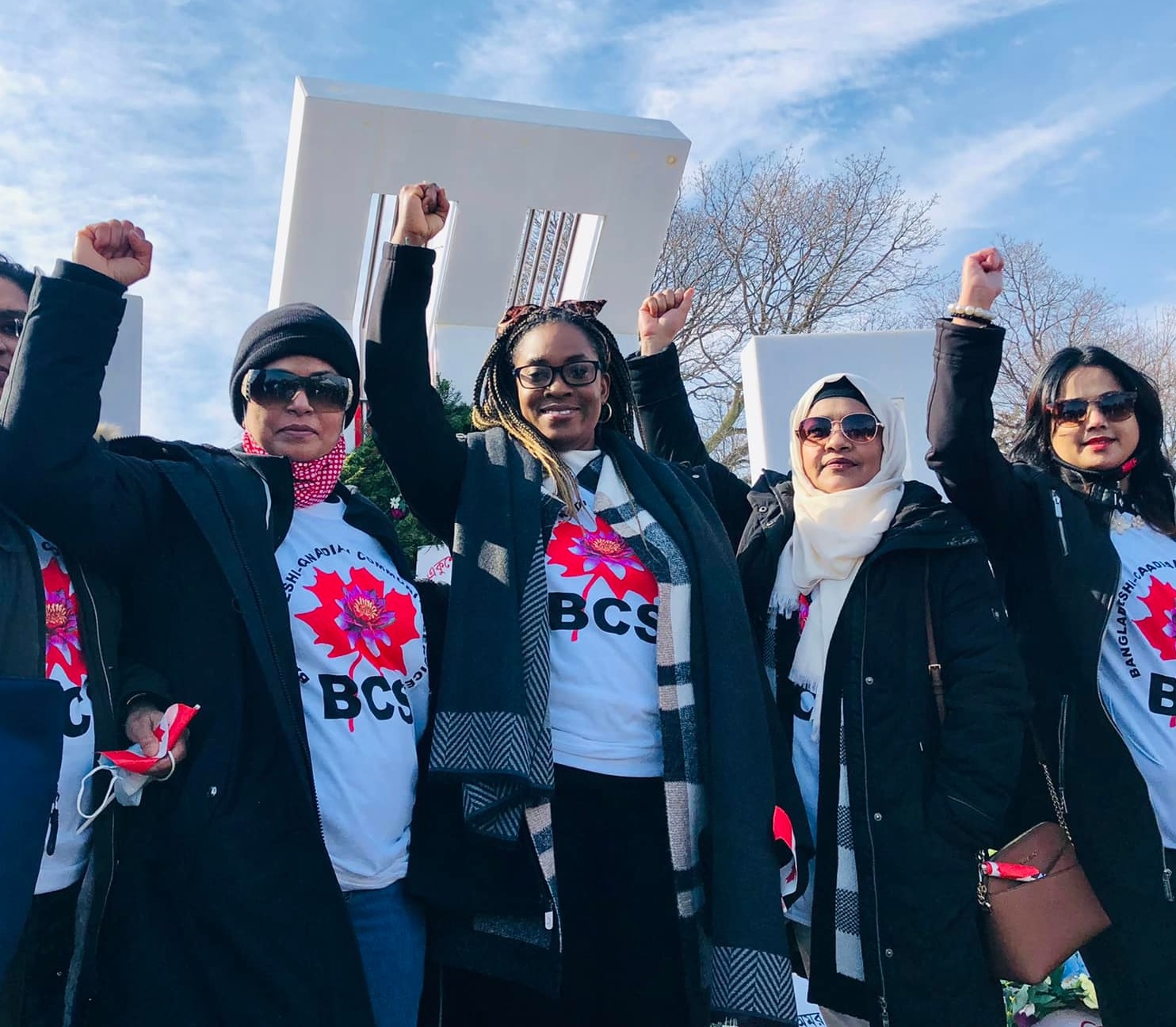
We often see both top-down and bottom-up approaches in community development practice. A top-down approach imposes goals and processes on a community (Brown & Hannis, 2012, p.9). For example: in a community revitalization project, we often see that residents are consulted, but developers/builders’ purposes are served. Another example would be that local and international agencies want to implement their agenda and priorities in community development projects, and community members are treated just as recipients. From my experience, unfortunately, these types of community initiatives dominate local and international community development discourse. Although these agencies show that they use various participatory tools to engage the local community in issue identification, problem analysis, project implementation, and evaluation, in reality, these processes are shown to show their sponsors, funders, and taxpayers. I will share such a story in chapter 10 and how a community practitioner and community can challenge this undemocratic practice.
As community workers, it is our responsibility to take a bottom-up approach in which the community actively participates in assessing their needs and setting goals and priorities. Brown and Hannis (2012) suggest that bottom-up development may start in response to a local issue, such as a food insecurity issue, or as a resistance to an externally imposed condition, for example, a community revitalization project. Regarding this externally imposed project, the goals of bottom-up community development initiative could be “to restore quality of life, diminish inequalities, reinstate democratic functioning, enhance members’ potential, and restore a sense of community among members” ( Brown & Hannis, 2012, p. 9).
Community development is a process based on democratic principles. Brown and Hannis defined community development from democratic perspectives (2012, 9): According to the authors:
“Community development is, fundamentally, a democratic and social process (Minkler (1990). It is “a process that increases the assets and attributes which a community is able to draw upon in order to improve their lives” (Ibid, Gobbon, Labonte, & Laverack, 2002, p.485). As well, community development “people acting collectively with others who share some common concern”. (Checkoway, 1997, p.13). It is “the capacity of local populations to respond collectively to events and issues that affect them (Gilchrist, 2003, p. 16). Finally, community development is “working with people at a local level to promote active participation in identifying local needs, and organizing those needs (Wright 2004, p.386). The success of community development work depends on “collective problem-solving, self-help, and empowerment” (Schiele, Jackson, & Fairfax, 2005, p.22).
5. Community Resilience
Resilience is the ability of a system (like a community) to absorb disturbance and retain primary function and structure. The term resilience has been applied to communities to describe a method of dealing with crisis and adapting to change (Roleland, 2012, p 11). The efforts to build community resilience often focus on growing the capacity to “bounce back” from disruptions, like those caused by climate change or COVID19. Transformative community development practices aim to help communities build resilience to poverty, natural disasters, gun violence, and socio-economic crises.
6. Sustainable Development
According to the Government of Canada (2021), “sustainable development is development that meets the needs of the present without compromising the ability of future generations to meet their own needs”. Roleland (2012) argues that “Sustainable development requires a fundamental economic and social change to improve human well-being while reducing the need for environmental protection” (2012, p.7). The key intentions of sustainable development are: a) desire to secure the means of survival, b) improve the quality of community life, c) protect the environment, and d) make inclusive and participatory decisions (Roleland, 2012, p.3).
The challenges of sustainability in the environment are urgent, as climate change is a massive crisis that already requires fast action. Population growth, overconsumption and wasting resources, carbon emotion, and government and private infrastructure projects adversely impact our communities worldwide. As a result, our communities are experiencing poverty, global warming, floods, cyclone, and many forms of disasters. The current COVID-19 pandemic shows that social sustainability can also become fragile due to the global health crisis, lack of health services and its impact on mental health and job losses.
7. Sustainable Development Goals for Community Practitioners
In recent times, community initiatives across the world guided by United Nations Sustainable Development goals. On 1 January 2016, the 17 Sustainable Development Goals (SDGs) of the 2030 Agenda for Sustainable Development — adopted by world leaders in September 2015 at a historic UN Summit — officially came into force (United Nations). The Sustainable Development Goals are a call for action by all countries – poor, rich, and middle-income – to promote prosperity while protecting the planet. They recognize that ending poverty must go hand-in-hand with strategies that build economic growth and address a range of social needs, including education, health, social protection, and job opportunities while tackling climate change and environmental protection (United Nations). The SDGs are vital for a recovery that leads to a greener, more inclusive economies and more robust and resilient societies. COVID-19 is spreading human suffering, destabilizing the global economy, and upending the lives of billions of people around the globe and the SDGs provide a critical framework for COVID-19 recovery. To achieve sustainable development, it is crucial to harmonize three basic elements: economic growth, social inclusion and environmental protection. These factors are interconnected and vital to the well-being of individuals and society (United Nations).
8. Community development practice: At a Glance
Community development practice: From Canadian and Global Perspectives is a resource book written to promote participatory, local asset-based, equitable, and sustainable community work practice.
Community Development Practice and Process: At a glance. Photo: Mahbub Hasan
- Listening to issues
- Conscientization
- Relationship building
- Diversity &Inclusion
- Asset mapping
- Planning
- Teamwork
- Taking Actions
- Partnership
- Campaigning
- Advocacting
- Celebration
Read, Watch, Listen:
- What is community development? By Government of Australia.
- Community Development Work at Centennial College. This video will provide you with an overview of community development in various settings and community development workers’ roles. Click here to watch.
Key Takeaways and Feedback
We want to learn your key takeaways and feedback on this chapter.
Your participation is highly appreciated. It will help us to enhance the quality of Community Development Practice and connect with you to offer support. To write your feedback, please click on Your Feedback Matters.
Thank you!
Reference
Brown, J. D. & Hannis, D. (2012). Community development in Canada. Pearson.
Government of Canada, (2021). Sustainable Development. https://www.canada.ca/en/public-health/corporate/mandate/about-agency/sustainable-development.html
Hick, S. & Stokes, J. (2017). Social work in Canada (4th ed.). Thompson Educational Publishing.
International Federation of Social Workers (2022). Global Definition of Social Work. https://www.ifsw.org/what-is-social-work/global-definition-of-social-work/
Ives, N., Denov, M., & Sussman, T. (2020). Introduction to social work in Canada: Histories, Contexts, and Practices (2nd ed.). Oxford University Press.
Parada, H., Barnoff, L., Moffatt, K., & Homan, M. S. (2011). Promoting community change: Making it happen in the real world (1st ed.). Nelson.
Resilience (n.d.). Six foundations for community resilience. Retrieved on August 13, 2022 from https://www.resilience.org/six-foundations-for-community-resilience/
Roseland, M. (2012). Toward sustainable communities: Solution for citizens and their governments (4th ed). New Society Publisher.
Sustainable Helsinki (2022). Why is sustainable development important and why is it monitored? Retrieved on August 13, 2022 from https://sustainable.helsinki/why-is-sustainable-development-important-and-why-is-it-monitored/
United Nations (n.d.) The sustainable development agenda. Retrieved on August 13, 2022 from https://www.un.org/sustainabledevelopment/development-agenda-retired/#:~:text=On%201%20January%202016%2C%20the,Summit%20%E2%80%94%20officially%20came%20into%20force.

